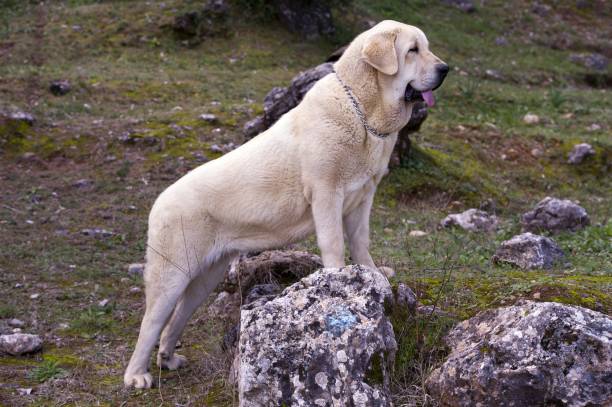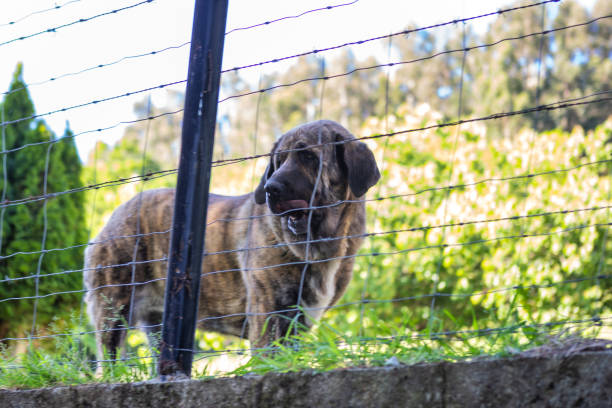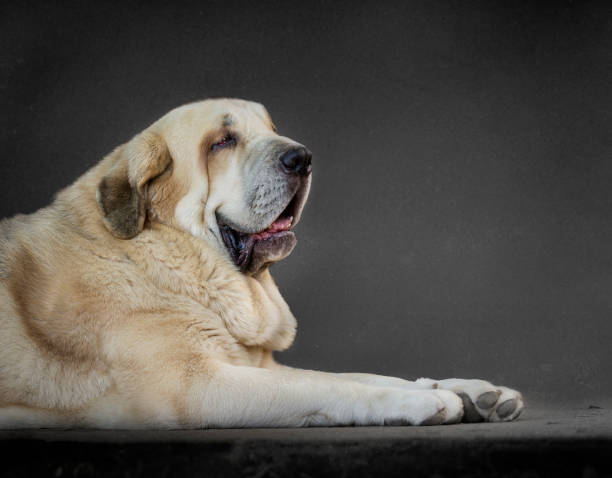Spanish Mastiff (Mastín Español)

Breed History:
The Spanish Mastiff, or Mastín Español, is an ancient and noble guardian breed from Spain, developed primarily to protect livestock—especially sheep—from predators like wolves and bears. Its roots trace back to at least the Middle Ages, when it accompanied transhumant herders along seasonal migration routes across Spain. The breed’s sheer size and deep bark made it an effective deterrent against predators.
Over time, the Spanish Mastiff became a symbol of strength and loyalty in rural Spanish culture. Despite a decline in use with the modernisation of agriculture, the breed remains an active working dog in many parts of Spain and has gained recognition internationally as a formidable guardian and gentle companion.
Considering adopting a Spanish Mastiff or a similar giant breed? Check out our page "How to look after a Great Dane" detailing what to consider before adopting and our recommended products for a Great Dane and other giant dog breeds.
|
Gender |
Height |
Weight |
|
Male |
77-88 cm |
60-100 kg |
|
Female |
72-85 cm |
50-80 kg |
Size – Giant
Life Expectancy: 10–12 years

Breed Appearance:
The Spanish Mastiff is a massive, heavy-boned dog with a powerful, muscular build and a calm, imposing presence. It has a large, broad head with loose skin and characteristic flews, giving it a somewhat solemn expression. Its dark, kind eyes and pendant ears complement its dignified look.
The breed’s short to medium-length coat is dense and weather-resistant. Common colors include fawn, brindle, red, black, and wolf-gray, often with a black mask. The body is well-proportioned with a deep chest, strong limbs, and a long, slightly curved tail. Its slow, rolling gait adds to its majestic air.
Breed Type – Livestock Guardian/Molosser:
The Spanish Mastiff is a traditional livestock guardian dog—loyal, protective, and incredibly brave. It is calm and affectionate with its family and the animals it protects, yet fiercely protective and territorial when faced with a threat.
Despite its size, the breed is generally gentle with children and reserved rather than aggressive with strangers. It is well-suited for working roles but can also adapt to life as a loyal family guardian if given proper space and structure.

Training:
The Spanish Mastiff is intelligent but has an independent and sometimes stubborn temperament. It was bred to make decisions on its own, so obedience training may require patience and persistence. This breed benefits from early and consistent socialization to help manage its natural suspicion of strangers.
Training should focus on positive reinforcement, firmness without harshness, and respect for the dog’s calm, confident nature. Due to its size and power, it is essential to teach leash manners, impulse control, and reliable recall from an early age.
Health & Care:
Generally hardy for a giant breed, the Spanish Mastiff is still vulnerable to typical large-breed health issues such as hip and elbow dysplasia, bloat (gastric torsion), and entropion (inward rolling eyelids). Reputable breeders screen for these conditions.
Nutrition should be carefully managed to prevent obesity and promote joint health. Controlled growth during puppyhood is especially important. Regular vet visits, parasite prevention, and weight monitoring are vital to the breed’s long-term well-being.

Living Conditions:
This breed thrives in rural, spacious environments, especially on farms or ranches where it can patrol and protect. It is not suited to apartment living or homes without a yard. The Spanish Mastiff does best when given a clear role—whether guarding livestock or property.
It tolerates cold weather well but may struggle in hot climates. A secure fence is necessary to prevent wandering. Despite its large size, it is relatively calm indoors and forms deep bonds with its family when included as part of daily life.
Exercise:
The Spanish Mastiff has moderate energy needs, requiring around 45–60 minutes of daily exercise. Long walks, free roaming in a fenced area, or light guarding duties are usually enough to keep it physically and mentally satisfied.
Puppies should not be over-exercised, as their joints are still developing. Mental stimulation—like problem-solving tasks or calm observation—is just as important as physical activity for this thoughtful, low-key breed.
Grooming:
The Spanish Mastiff’s short to medium coat is low-maintenance. Weekly brushing is typically sufficient to remove loose hair and dirt. During seasonal shedding (spring and fall), more frequent brushing helps control the undercoat.
Bathing is needed only occasionally. Check and clean the ears regularly to prevent infections, and maintain basic hygiene with regular nail trims and dental care. Monitor for ticks or skin issues, especially if the dog works outdoors.

Advantages:
-
Excellent guardian with strong protective instincts
-
Calm, composed, and gentle with family and livestock
-
Highly loyal and devoted companion
-
Minimal grooming needs for a giant breed
-
Naturally reserved and non-aggressive unless provoked
-
Independent yet affectionate toward trusted humans
Disadvantages:
-
Requires early socialization and training to manage size and protectiveness
-
Not suited to apartment or city living
-
Can be stubborn or independent-minded
-
Risk of joint issues and bloat common to giant breeds
-
Needs secure fencing and space to roam
-
Drools and sheds, especially during seasonal coat changes

